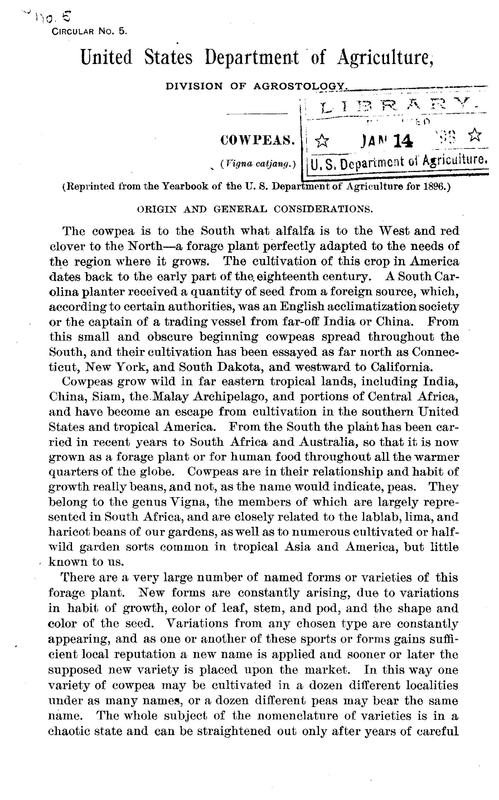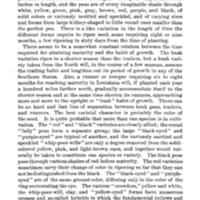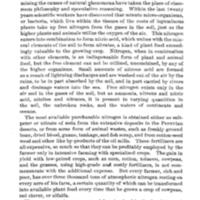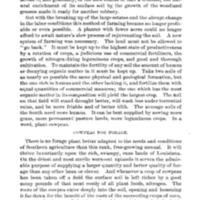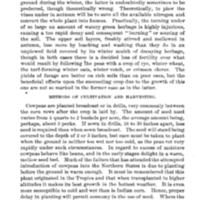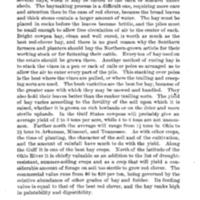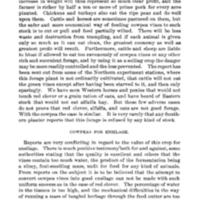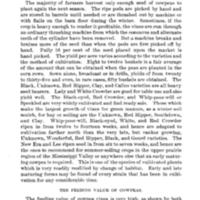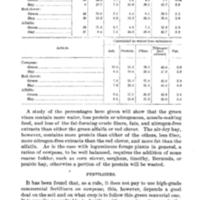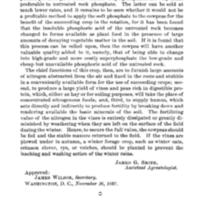Cowpeas: (Vigna catjang)
Creator
Date
1897
Relation
Excerpt
The cowpea is to the South what alfalfa is to the West and red clover to the North — a forage plant perfectly adapted to the needs of the region where it grows. The cultivation of this crop in America dates back to the early part of the eighteenth century. A South Carolina planter received a quantity of seed from a foreign source, which, according to certain authorities, was an English acclimatization society or the captain of a trading vessel from far-off India or China. From this small and obscure beginning cowpeas spread throughout the South, and their cultivation has been essayed as far north as Connecticut, New York, and South Dakota, and westward to California.
Cowpeas grow wild in far eastern tropical lands, including India, China, Siam, the. Malay Archipelago, and portions of Central Africa, and have become an escape from cultivation in the southern United States and tropical America. From the South the plant has been carried in recent years to South Africa and Australia, so that it is now grown as a forage plant or for human food throughout all the warmer quarters of the globe. Cowpeas are in their relationship and habit of growth really beans, and not, as the name would indicate, peas. They belong to the genus Yigna, the members of which are largely represented in South Africa, and are closely related to the lablab, lima, and haricot beans of our gardens, as well as to numerous cultivated or half-wild garden sorts common in tropical Asia and America, but little known to us.
Cowpeas grow wild in far eastern tropical lands, including India, China, Siam, the. Malay Archipelago, and portions of Central Africa, and have become an escape from cultivation in the southern United States and tropical America. From the South the plant has been carried in recent years to South Africa and Australia, so that it is now grown as a forage plant or for human food throughout all the warmer quarters of the globe. Cowpeas are in their relationship and habit of growth really beans, and not, as the name would indicate, peas. They belong to the genus Yigna, the members of which are largely represented in South Africa, and are closely related to the lablab, lima, and haricot beans of our gardens, as well as to numerous cultivated or half-wild garden sorts common in tropical Asia and America, but little known to us.
Title
Cowpeas: (Vigna catjang)
File(s)
Cowpeas (Vigna catjang) 1.jpg
(image/jpeg)
Cowpeas (Vigna catjang) 2.jpg
(image/jpeg)
Cowpeas (Vigna catjang) 3.jpg
(image/jpeg)
Cowpeas (Vigna catjang) 4.jpg
(image/jpeg)
Cowpeas (Vigna catjang) 5.jpg
(image/jpeg)
Cowpeas (Vigna catjang) 6.jpg
(image/jpeg)
Cowpeas (Vigna catjang) 7.jpg
(image/jpeg)
Cowpeas (Vigna catjang) 8.jpg
(image/jpeg)
Cowpeas (Vigna catjang) 9.jpg
(image/jpeg)
Cowpeas (Vigna catjang) 10.jpg
(image/jpeg)
 An official website of the United States government.
An official website of the United States government.


